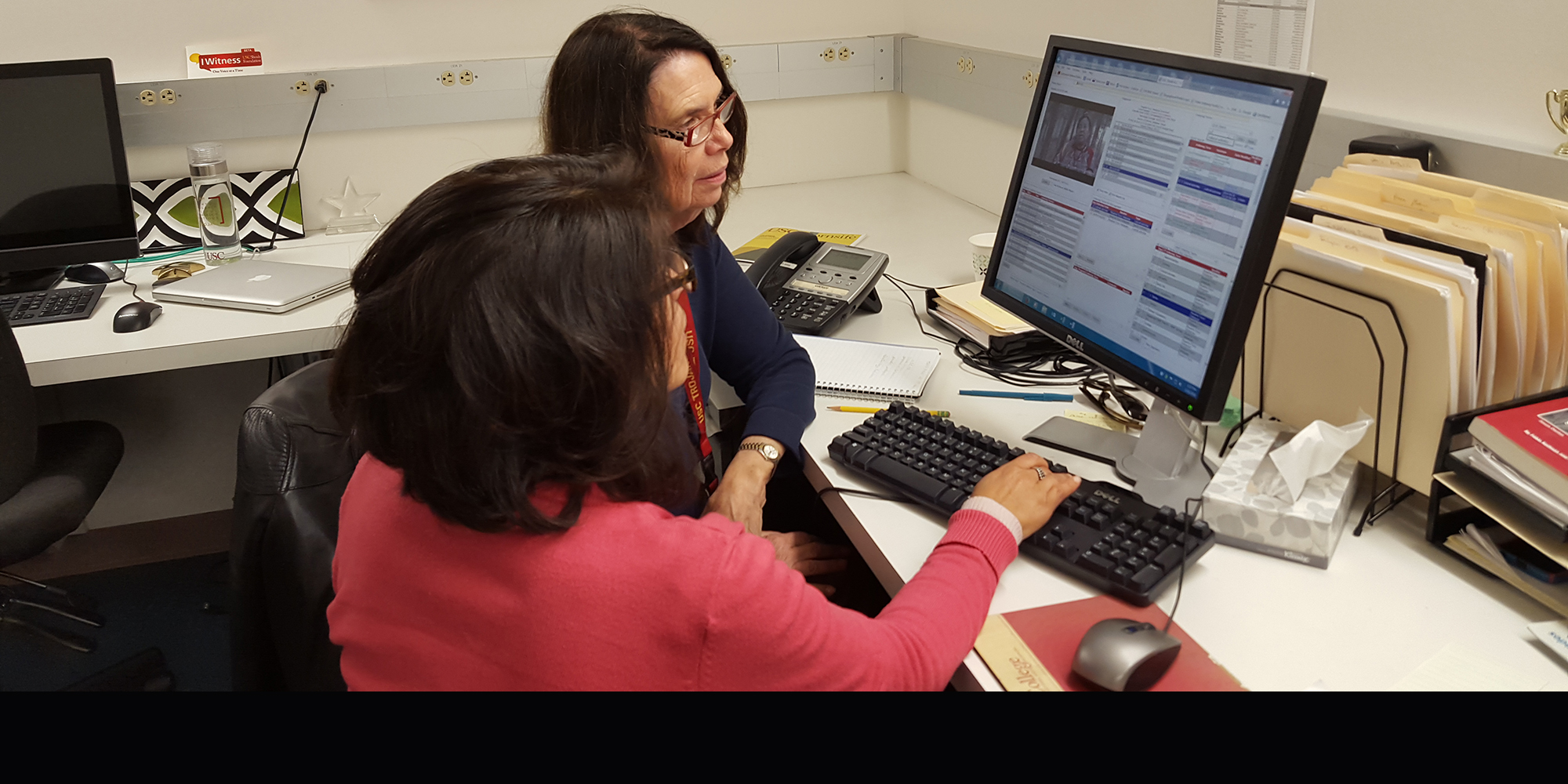USC Shoah Foundation Designs New Online Indexing Training Course

 Ita Gordon and Sandra Gruner-Domic index testimonies.
Ita Gordon and Sandra Gruner-Domic index testimonies.Indexing is USC Shoah Foundation’s process of assigning subject terms to one-minute segments of every testimony in the Visual History Archive, matching what the interviewee is talking about at the given minute. The terms allow the entire archive to be searchable to the minute, so users can easily find the testimonies (or segments of testimonies) they are looking for.
Re-imagining indexing
Traditionally, USC Shoah Foundation has hired indexers to work on each new testimony collection that is brought in to the Visual History Archive, such as JFCS San Francisco’s collection of over 900 Holocaust testimonies that was integrated last year.
The indexers – who typically have expertise in history and library science – travel to Los Angeles and spend six weeks at the USC Shoah Foundation office to learn how to index the testimonies according to the Institute’s unique indexing methodology, taught by USC Shoah Foundation staff. After their training is complete, the indexers return home and index several testimonies a week using the Institute’s Internet-based indexing software.
However, as the Visual History Archive acquires more collections as part of its Preserving the Legacy initiative and through partnerships with other institutions such as FAFG in Guatemala, Institute collections staff realized that there was a need for larger-scale indexer training that would also give partner institutions around the world the option of training their own staff and community members.
An online-only indexing training course would enable indexers to learn how to do their job without needing to travel to Los Angeles for six weeks, and larger numbers of indexers could be trained, reducing overall training costs while improving efficiency.
“We work with many different partners who want to replicate what we do and connect with us but don’t have the capacity to scale up [the current indexing process],” said Director of Collections Karen Jungblut. “They often would like their own staff to be trained, to be part of the process, get insight into their collection and help curate their collection. And that makes great sense.”
The new online indexing training course
The online course was designed and constructed by Jungblut, Visual History Archive Curator Crispin Brooks, International Digital Education Associate Inna Gogina, Content Specialist Ita Gordon and former Project Manager of the Preserving the Legacy Initiative Scott Spencer, along with input from current and former indexers.
It is hosted on Canvas, an educational platform for online classes.
The course teaches students not only how to use the indexing software, but also how to thoughtfully and accurately choose the most precise indexing terms to represent what an interviewee is talking about in any given segment. A segment may require just one term or half a dozen; an interviewee may make a vague or unclear statement; or he or she may reference an obscure town or an abstract concept. Indexers must familiarize themselves with the Institute’s thesaurus of nearly 65,000 terms and learn strategies for deciding which ones to use in order to index the testimonies most appropriately.
The course should take students three to four weeks to complete and includes 13 modules, plus an introduction and conclusion. Short videos throughout the course feature Jungblut, Brooks, Gordon, Spencer and Executive Director Stephen Smith welcoming students and providing guidance. Students must receive passing scores on quizzes at the end of each module, and they can participate in discussions with each other and the staff within the course.
Each module covers a different facet of the indexing process, from entering biographical data for each testimony to choosing the appropriate indexing terms from the archive’s thesaurus. Different modules also focus on different experiences that indexers may encounter in the testimonies, such as “Persecution and Violence,” “Responses and Aftermath,” and “Movement.”
Gordon helped develop the quiz questions and chose the 26 testimony clips that are used within the quizzes to test students’ indexing knowledge. She also chose most of the testimonies that students practice indexing in their entirety on their own at the end of the course.
“I believe that my historical perspective and ability to listen with my heart and head have facilitated my task of picking clips and testimonies for the Online Indexing Training Course,” Gordon said. “An understanding of the interviewees that comes with having engaged with so many with their testimonies is always of great importance and help to me.”
“We hope that the course will help students not only learn the specific terms and methodologies but also to develop the reflectiveness and openness to new ideas that characterize our approach,” said Curator Crispin Brooks.
The course is expected to be released in summer 2017, following final staff review, feedback and testing. Additional questions about management of the course will also be discussed. After that, USC Shoah Foundation and its collection partners will be able to use the online course to train potential candidates all over the world.
Like this article? Get our e-newsletter.
Be the first to learn about new articles and personal stories like the one you've just read.